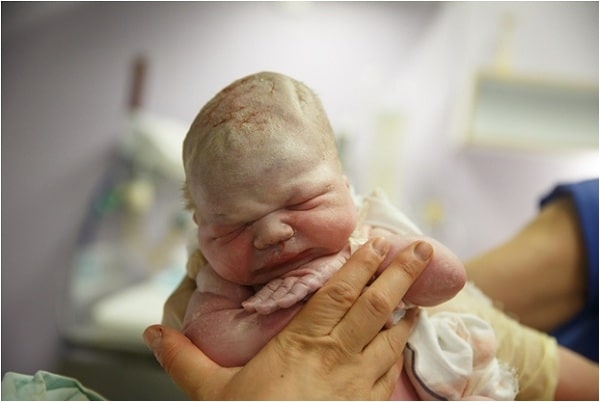As a new parent, seeing your newborn child for the first time and realizing they have suffered from a birth injury can be alarming. When you imagined what your baby was going to look like, let’s face it, you weren’t picturing an infant with a large, swollen area on their head. It’s natural that you’d be concerned, and that you would want to know how long it would last.
The good news is, in most cases, this swollen area, which is known as caput succedaneum, will go away on its own in a couple of days without any treatment. This form of edema may be mildly uncomfortable for your baby, but keep calm because it’s not going to cause permanent damage.
Symptoms of Caput Succedaneum
Your newborn may have caput succedaneum if they are born with a swollen scalp. They may also have scalp and facial bruising. This condition is not dangerous on its own and most likely won’t require any special treatment. However, babies with the condition may also have other damage related to the birth injury that caused it. Some related conditions your baby may also have include:
- Jaundice
- Oxygen deprivation
- Brain injury
- Cerebral palsy
Jaundice is the most common condition that is diagnosed in babies with caput succedaneum. If it’s not monitored closely and treated, it could lead to your baby developing a much more dangerous condition called kernicterus.
The Difference Between Caput and Cephalohematoma
A cephalohematoma is the result of a birth injury that results in internal bleeding on a newborn’s skull, as opposed to the collection of fluid that is responsible for caput succedaneum. The two conditions share the fact that they are caused by birth trauma, and they can co-occur with other birth injuries.
 Another thing the two conditions share in common is the fact that in most cases will resolve on their own, though a cephalohematoma may take longer. It could take weeks or even months for it to go away. The two conditions also sometimes occur together in cases when a baby has lumps on their head that are caused by collections of blood and fluid.
Another thing the two conditions share in common is the fact that in most cases will resolve on their own, though a cephalohematoma may take longer. It could take weeks or even months for it to go away. The two conditions also sometimes occur together in cases when a baby has lumps on their head that are caused by collections of blood and fluid.
Both caput succedaneum and cephalohematomas can be caused by pressure from passing through the birth canal. They can also be caused by a doctor’s mistake, such as using too much force during a forceps delivery. In 25% of cases of cephalohematoma, the injury will also be associated with a skull fracture.
What Caput Succedaneum Looks Like
Caput succedaneum typically presents as a spot on the top of the head that is swollen and puffy. It may also appear on the side of the head, depending on which part of your newborn’s head went through the birth canal first. If you press your finger into the swollen area, it may leave a temporary dimple or impression on your baby’s head.
Babies with the condition may also experience newborn head molding, which is also known as cranial molding. This happens when the soft, flexible parts of a newborn’s skull change shape to allow passage through the birth canal. You may also notice bony ridges on your baby’s head. These will also go away over time.
Caput succedaneum is a common birth injury. Your baby is definitely not the only one who left the hospital with a lump or a funny shaped head. Don’t worry, dad, all of this will be a memory in a few weeks and your baby’s head will go back to normal. Once it does, you’ll have 18 years to spend worrying about everything else. Trust me on that one.


















